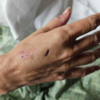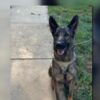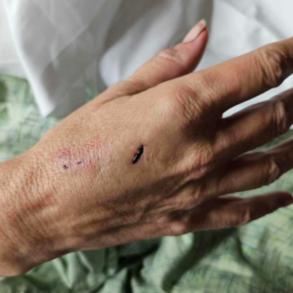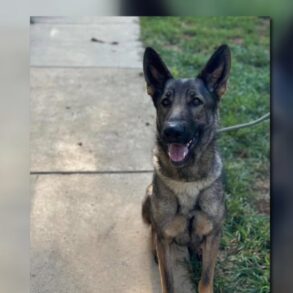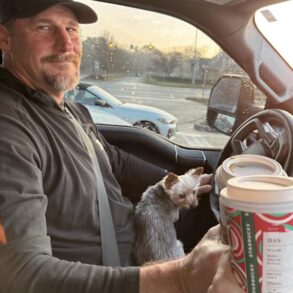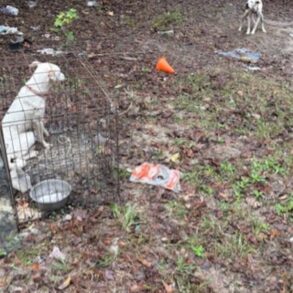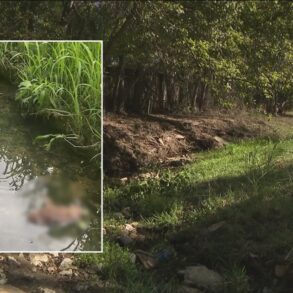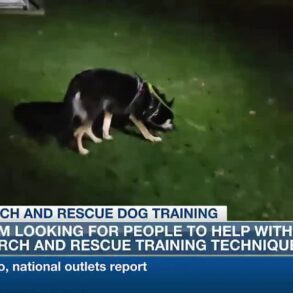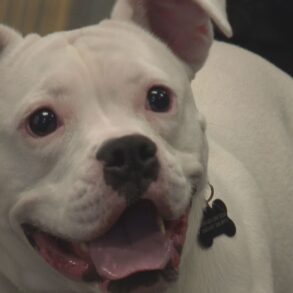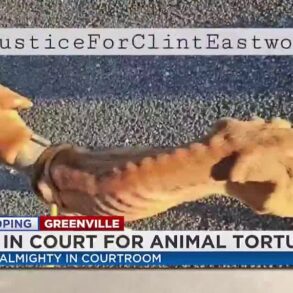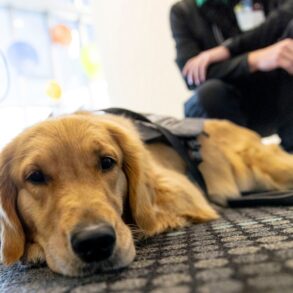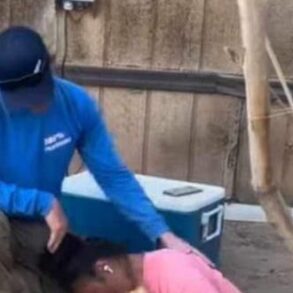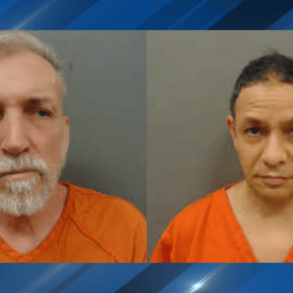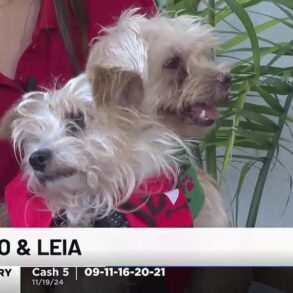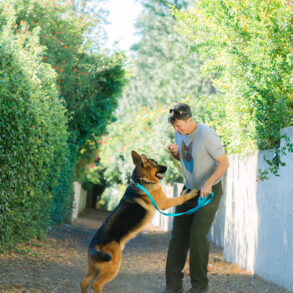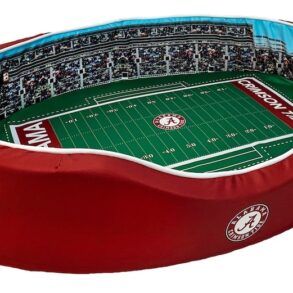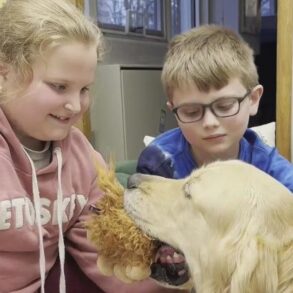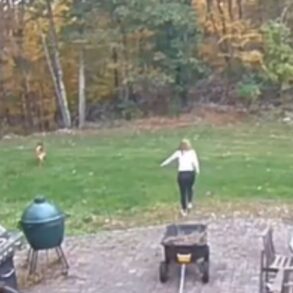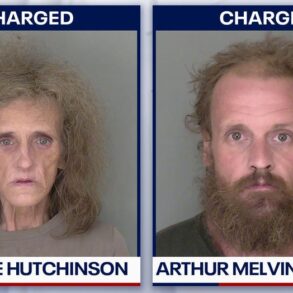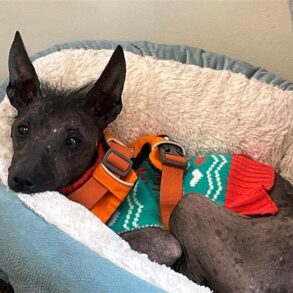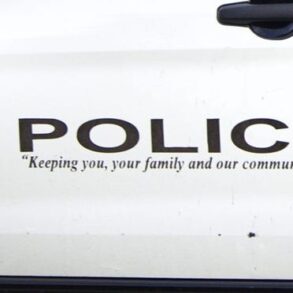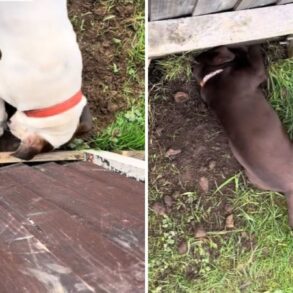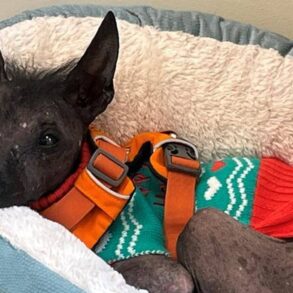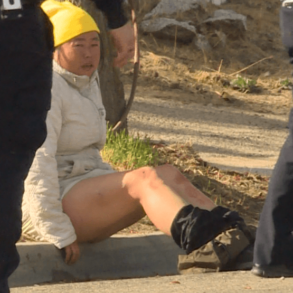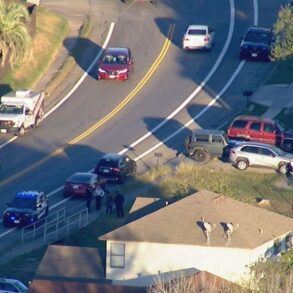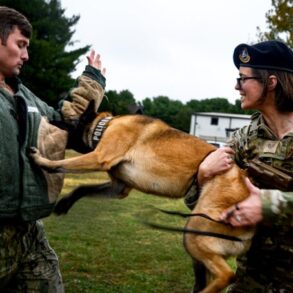The U.S. Secret Service has enlisted a new team member to help protect President-elect Donald Trump at his Mar-a-Lago Club in Palm Beach: Robotic dogs.
The robots are made by Massachusetts-based Boston Dynamics, which gave the mechanical canines the name “Spot.”
Photos of one of the robots quickly went viral after they were posted on social media. Images and video taken by visitors to Mar-a-Lago show the Boston Dynamics creation with a black, white and red color scheme.
In one video from news agency Reuters, Spot is seen patrolling the seawall along the Intracoastal Waterway at Mar-a-Lago’s west edge.
The words “Do Not Pet” are printed on the robot’s legs, a reminder that this is not actually a dog — though the temptation to pet this Spot is probably not the first thing on a person’s mind.

The robot’s body bears the name “USSS TSD,” representing the Secret Service’s Technical Security Division, which according to the Secret Service provides “technical expertise and operational support for criminal investigations,” while also working to create secure environments for people under Secret Service protection.
“Safeguarding the President-elect is a top priority,” Secret Service spokesperson Bob Page said in an email to the Daily News. “The robotic dogs at Mar-a-Lago are Secret Service assets and while we cannot discuss the specific number or their capabilities, we can say the robotic dogs are equipped with surveillance technology, and an array of advanced sensors that support our protective operations.”
The Secret Service profiled its use of the Boston Dynamics robot in July for a video posted to the agency’s social media accounts, where the Secret Service said the robotic dog is part of the agency’s ASTRO Program, with ASTRO standing for Autonomous Systems and Technical Robotic Operation.
The Secret Service used ASTRO — which in the video had a blue, yellow and black color scheme — to help secure venues ahead of events for the NATO Summit in Washington, D.C., this past summer, the agency said in the video.
ASTRO’s software can scan for chemical, biological, radiological and nuclear threats “and report back to a user that’s operating it remotely,” Angela Edwards, a physical scientist with the Secret Service, said in the video. “I like to say that the robot increases the situational awareness of the user, because we have so many cameras and the ability to put so many different types of cameras.”
Those cameras include thermal and high-resolution cameras, Edwards said in the video, which juxtaposed the robotic dog with one of the agency’s more literal dogs: a German Shepherd. Edwards is shown using a handheld device to remotely control ASTRO.
Palm Beach County-based Levatas provides artificial intelligence for the Spot program. Levatas CEO and founder Chris Neilsen declined to comment on the version of Spot being used by the Secret Service at Mar-a-Lago.
Nielsen said at the Kravis Center for the Performing Arts event last year that his company’s software is the “brains” of the Spot robot, which was developed by Boston Dynamics to remove humans from dangerous situations. Levatas’ AI platform helps Spot evaluate things like temperature and pressure gauges, Nielsen said at the time.
In a statement emailed to the Daily News, a Boston Dynamics spokesperson said the company is proud to support the Secret Service through its Spot robot.
“For security reasons, we cannot comment on specific USSS applications,” the spokesperson said. “In general, Spot keeps people out of harm’s way and is used in a wide variety of public safety tasks.”
More:Watch this dog-like robot that uses Palm Beach County artificial intelligence to do its job
Spot is the first Boston Dynamics robot to be available for purchase by commercial customers, and it costs about $75,000, a price that can rise based on additional features, according to Boston Dynamics sales materials.
The robo-pup is just under 4 feet long and stands about 2 feet tall. It can move at speeds of up to 5 feet per second on its four legs.
Since its release, government agencies, law enforcement organizations and companies have brought Spot onto their teams, with Florida Power & Light Co. and Chevron among those that have embraced the robotic dog.
The first law enforcement agency to use Spot was the Massachusetts State Police, which deputized Spot in 2019.
One of that agency’s robotic dogs, named Roscoe, made headlines in March when it was shot three times by a man during a standoff.
“The incident provided a stark example of the benefits of mobile platforms capable of opening doors and ascending stairs in tactical missions involving armed suspects,” Massachusetts State Police said in a social media post at the time. “In addition to providing critically important room clearance and situational awareness capabilities, the insertion of Roscoe into the suspect residence prevented the need, at that stage of response, from inserting human operators and a real dog, and may have prevented a police officer or K9 from being involved in an exchange of gunfire.”
Security around Trump’s estate was increased following the July 13 attempted assassination of Trump at a campaign rally in Pennsylvania that left the then-presidential candidate and two attendees injured and another of Trump’s supporters dead.
After the July 13 attempt, another incident occurred at Trump International Golf Club in West Palm Beach in September, when a Secret Service agent spotted the barrel of a rifle poking through bushes along the golf course’s perimeter while securing the area as Trump golfed nearby.
A Secret Service spokesperson previously said that the agency elevated security around all of the people it protects following the July shooting “in order to ensure the highest levels of safety and security for the people and places we protect.”
Kristina Webb is a reporter for Palm Beach Daily News, part of the USA TODAY Florida Network. You can reach her at kwebb@pbdailynews.com. Subscribe today to support our journalism.
This post was originally published on this site be sure to check out more of their content.

